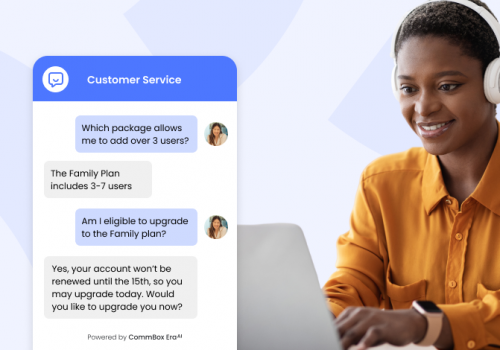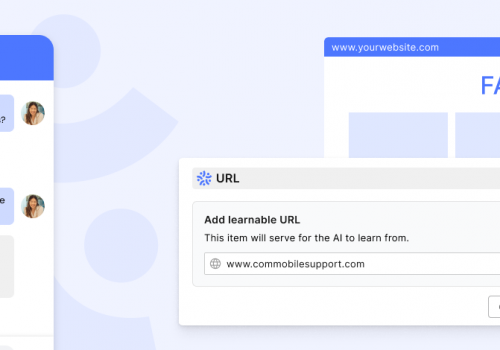Ultimate SaaS Product Strategic. There are two primary components of a SaaS go-to-market machine. You have the strategy and the execution of the strategy. Most SaaS businesses tend to over-focus on the execution. They might use email distribution software to send out 2000 emails or pay Facebook and Google to advertise their business. There’s no doubt that the execution is essential – you need to send out emails to entice people in and promote your product to increase brand awareness.
However, some companies over-focus on this aspect, essentially just pumping more and more money into it and hoping for results. For example, they might have modest success with the first email campaign of 2000 emails, so they decide to do a new campaign, this time with 3000 emails.
Most SaaS businesses would benefit from focusing more time on the narrative strategy. When you get your SaaS narrative strategy right, incredible results follow. Suddenly, that email campaign is twice as effective without increasing the number of emails you send out. Your ads land better than before and generate increased traffic to your website. This is what we’re going to be looking at today – we’re going to tell you how to create the ultimate product narrative for SaaS business in 2021. Let’s get started!
What is a Strategic Narrative?
In its simplest form, a strategic narrative is your core message. It’s a clear and well-articulated message around your product and why people should buy it. In an organization, a strategic narrative would be a well-articulated, clear, and concise vision or strategy for the company’s future.
To put it another way; it’s a storytelling tool. Rather than using bullet points, stats, or presentations, you clearly define your strategy in a simple and easy to understand narrative.
Why Storytelling is Essential in 2021…And Every Year Before
People love stories. It’s why we read books and go to the movies. But why are they so significant to us?
No other movie captures the importance of storytelling quite like the 2003 movie Big Fish. The film follows a father, Edward, and son, Will, from when the son is a small child to when he becomes a father himself.
Growing up, Will was enthralled by his father’s fantastical stories about his adventures in life. When Will is suffering from chickenpox, Edward tells him that he was once stuck in bed for three years because his body outgrew his mind. But once his body stopped growing, he achieved some fantastic things, becoming mayor of the town, excelling in sports, and school. A giant later came to the town and started eating all the livestock, much to the citizens’ dismay who wanted to run him off with pitchforks. Edward told the giant that he was too big for the town, and he’d live a better life finding a bigger town. In his childhood, Edward met a witch. If you looked into the witch’s eye, you would see how you were going to die. Edward did look into the eye, and he liked what he saw, but he refused to tell people how his story ended. There are many more magical stories like this.
As a child, Will loves hearing his father’s stories. But when he grows up, he becomes frustrated – he realizes these are tall tales. They aren’t real, and his father has been lying to him all these years. When his father refuses to admit the stories are lies, Will decides to start investigating. On his travels, he finds out that while the stories aren’t strictly true, they all have elements of truth. The characters are real people. In the end, he understands that the stories were metaphors. They were Edward’s way of passing on the wisdom he learned in life. The witch story’s message is not to be scared of life – what will happen will happen, so enjoy your time here. The giant’s story is a metaphor for how you shouldn’t be afraid to grow and challenge yourself.
Storytelling is important for the following reasons:
- It helps us understand the meaning behind an idea or product.
- It humanizes the situation and helps establish an emotional connection.
- It strengthens a company’s brand. People remember stories far longer than they remember the product.
- Stories motivate and inspire in a way bullet points and statistics can’t.
Differentiating Yourself From the Competition
Your strategic message is your hook. It’s how you differentiate yourself from your competitors. Once you get your strategic narrative right, everything else about your SaaS business becomes more effortless. Designing your website, making marketing content, crafting sales decks all becomes easier.
So, now you know why you need a strategic message, let’s look at how you craft one by looking at the leading tips and hacks in 2021.

Tips and Hacks for Creating Your Strategic Message
Tips for Getting the Message Just Right
Why
The first thing you need to do is determine why the customer should read your message. Imagine your customer scrolling through their inbox or browsing Facebook. Your email is nestled in a sea of other emails, some from your competitors. On Facebook, the user’s attention is focused on the posts from their friends and family. How do you grab their attention? Why should they click on your message above the others?
- Be specific – Don’t say your product is aimed at salespeople, photographers, etc. It’s too broad. Instead, say “our product is aimed at B2B salespeople in young companies in a hyper-growth phase”. Your aim should be to attract your ideal customer, not to cast a wide net and suffer when it comes to conversions.
- Create an ideal customer profile – If you don’t have one already, then you need one. Look at different factors including geographic (where they live), product use (how they use the product), demographic (age, gender), sociographic (the groups they belong to, e.g. married or have children), and behavioural (how they prefer to buy or be communicated with).
Opportunities and Risks
Present an opportunity or a risk that hooks the user in. For example, “6 out of 10 small companies are one cyber attack away from going under”. This statement is both an opportunity and a risk because it communicates:
- You could be one of these companies. (risk)
- Your cybersecurity probably isn’t adequate. (risk)
- You have the opportunity to ensure this doesn’t happen to you. (opportunity)
Why Now?
So far you’ve targeted a specific customer (your ideal customer), you’ve presented them with an opportunity or risk, and now it’s time to tell them why they need to act now. Here you need to communicate what the customer will lose by not acting now.
How to Use Strategic Narratives in Sales Decks
If you’re a B2B SaaS company or even a B2C SaaS company who frequently needs to pitch your product in meetings with high-value prospects, then you need to communicate your strategic narrative in a sales deck. So, how do you do this? By telling your story with these five steps.
1. Name a significant relevant change in the world.
For example:
- Customer expectations are shifting – 63% of customers expect businesses to provide new products and services more frequently than ever before.
- Demand for a product has rapidly increased – The demand for Video conferencing software or home cybersecurity software increased exponentially due to coronavirus.
- A shift in perspective – Customers now care more about how socially or environmentally conscious brands are. Brands seen to be ignoring these issues can lose customers.
Introducing a change is similar to raising a problem and then offering a solution. However, many SaaS experts argue that leading with a change over a problem is better. Why? Because a change in the world is something that is happening to everyone equally. As the company doing the selling, introducing a change creates a sense of “we’re all in this together, and we want to help you excel in keeping up with the evolutions in the market”.
2. Communicate how there will be winners and losers
This is about introducing the stakes for inaction. Companies who fail to respond to these changes will be left behind as their competitors’ race ahead.
3. Tease what they could achieve
In this step, you skip how to get there and tease them with the end result. Doing this forces the listeners to visualize what they can achieve – it drums up excitement for success.
4. Tell them how your product will help them achieve success
In this part, you must drill into the specifics. Don’t be vague! Tell the listeners about the features your product has and how these features drive real results.
5. Evidence
In the closing section of the sales pitch, you should present evidence that backs up your claim. You can use a case study of a previous project you’ve finished to completion. Again, it’s essential to be specific and use statistics that prove success. For example, how your product and its features increased the ROI of one company four times, or something similar.

Hacks for Great Stories
Conflict
All great stories contain conflict. Conflict helps us understand what’s at stake if we don’t act. It’s a problem that needs to be overcome, and your product is the solution. Without conflict, there’s no reason to buy your product today – there’s no urgency and no problem that needs to be solved.
The conflict is the user’s problem. The problem could be a shift in the market or underachieving in their business goals.
Plot and Characters
If you’re using storytelling to sell your product in a more extended narrative, you need to develop the story’s characters and plot. For example, let’s say you’re telling the story of how your businesses started, complete with messages about problems you saw in the market and your desire to help customers facing a common problem. There are a couple of ways you can create more emotion in this story and make it more engaging:
- Make it a character-driven story – Instead of focusing on statistics of how many users were facing a problem, tell the story of their experiences. Use one person as an example of the collective.
- Put a face to the name – If you’re talking about the people who made your company what it is, then they need to appear as real people with real lives. Customers trust companies more when they can see the people behind the company.
Use Visual Tools
Visual tools can help bring your storytelling to life. Not only do they help your audience understand the message, but they also break up the content. When the form of content shifts from text to visual, our brains become more alert. Changes in narrative style draw more attention to the story, ensuring your audience stays focused until you’ve finished delivering your message.















